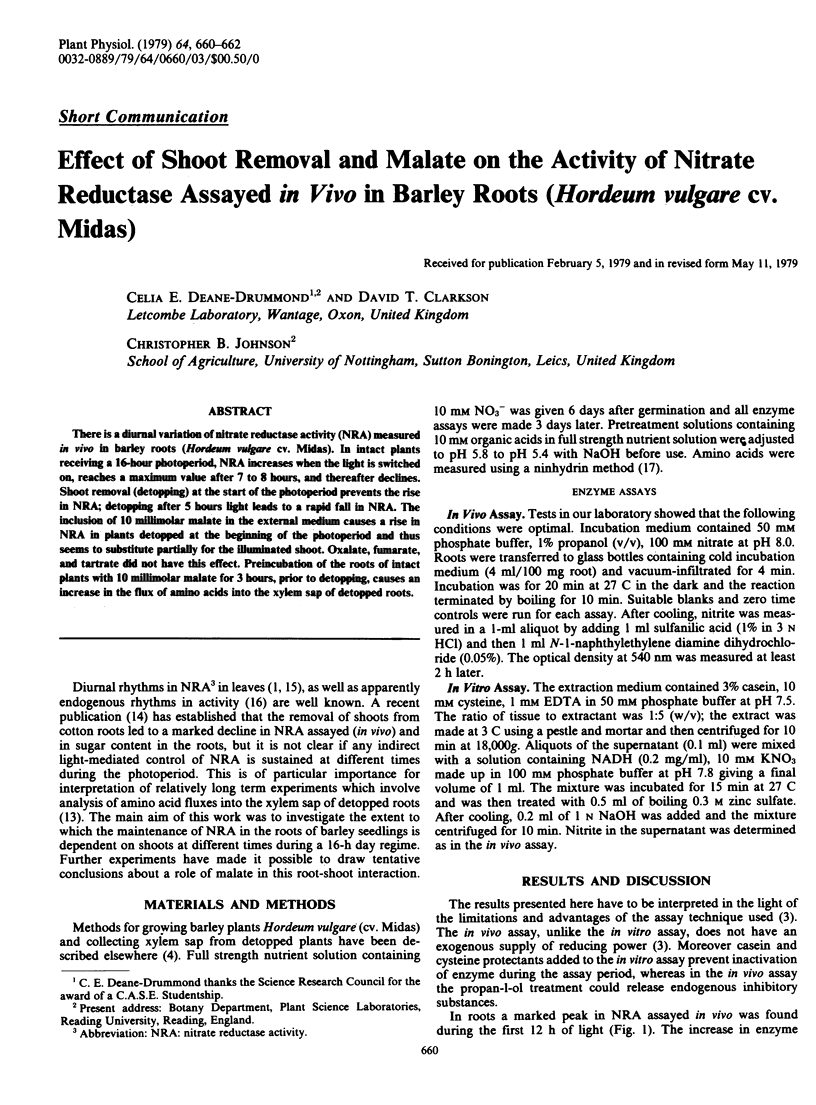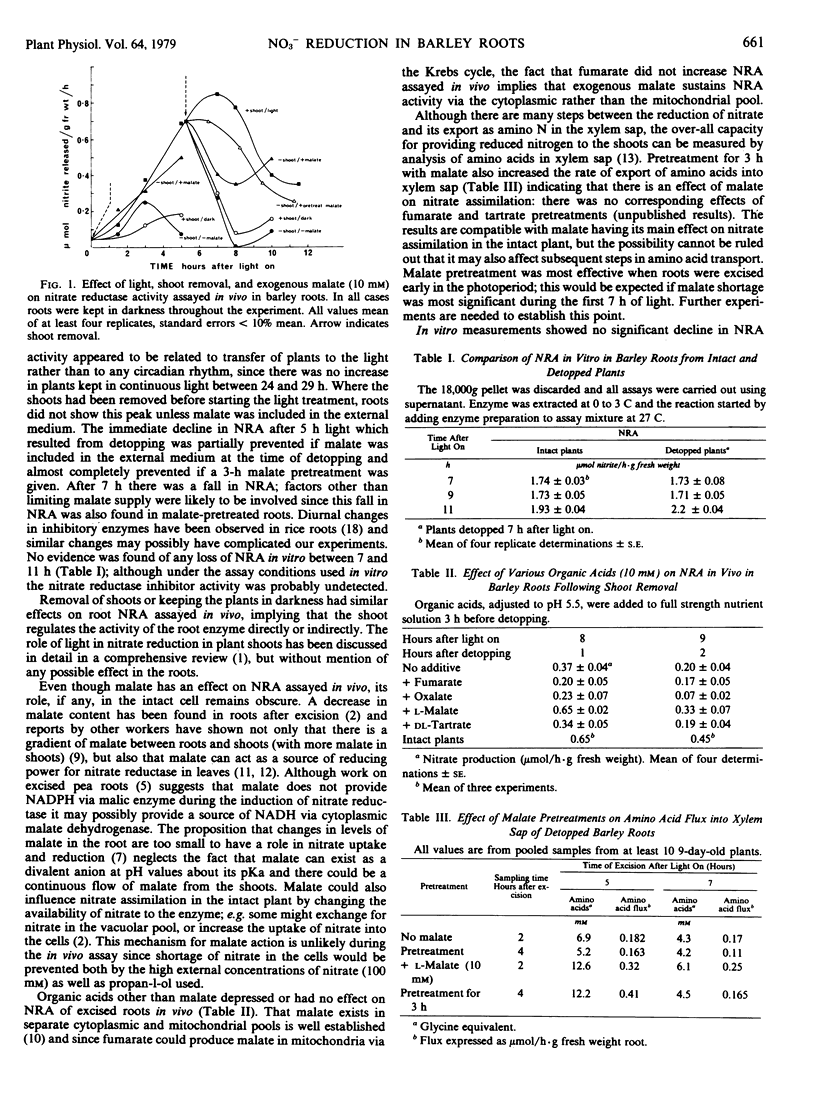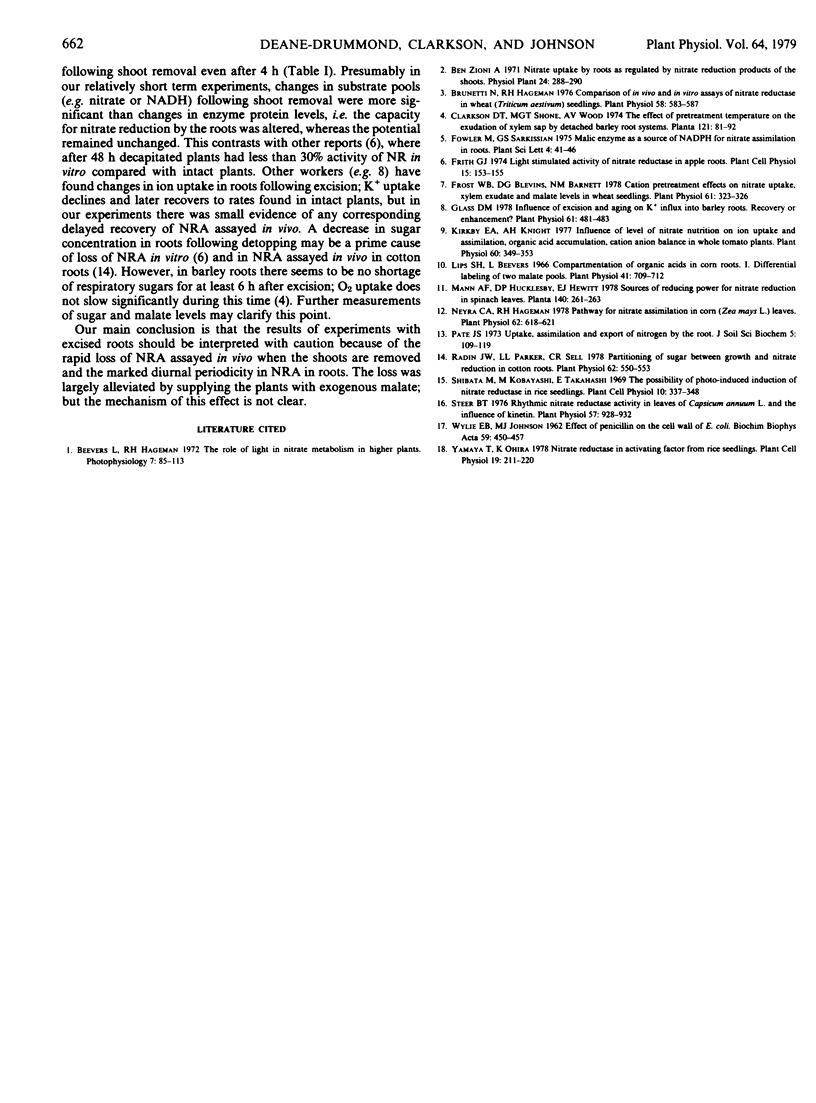Abstract
There is a diurnal variation of nitrate reductase activity (NRA) measured in vivo in barley roots (Hordeum vulgare cv. Midas). In intact plants receiving a 16-hour photoperiod, NRA increases when the light is switched on, reaches a maximum value after 7 to 8 hours, and thereafter declines. Shoot removal (detopping) at the start of the photoperiod prevents the rise in NRA; detopping after 5 hours light leads to a rapid fall in NRA. The inclusion of 10 millimolar malate in the external medium causes a rise in NRA in plants detopped at the beginning of the photoperiod and thus seems to substitute partially for the illuminated shoot. Oxalate, fumarate, and tartrate did not have this effect. Preincubation of the roots of intact plants with 10 millimolar malate for 3 hours, prior to detopping, causes an increase in the flux of amino acids into the xylem sap of detopped roots.
Full text
PDF


Selected References
These references are in PubMed. This may not be the complete list of references from this article.
- Beevers L., Hageman R. H. The role of light in nitrate metabolism in higher plants. Photophysiology. 1972;(7):85–113. [PubMed] [Google Scholar]
- Brunetti N., Hageman R. H. Comparison of in Vivo and in Vitro Assays of Nitrate Reductase in Wheat (Triticum aestivum L.) Seedlings. Plant Physiol. 1976 Oct;58(4):583–587. doi: 10.1104/pp.58.4.583. [DOI] [PMC free article] [PubMed] [Google Scholar]
- Frost W. B., Blevins D. G., Barnett N. M. Cation pretreatment effects on nitrate uptake, xylem exudate, and malate levels in wheat seedlings. Plant Physiol. 1978 Mar;61(3):323–326. doi: 10.1104/pp.61.3.323. [DOI] [PMC free article] [PubMed] [Google Scholar]
- Glass A. D. Influence of Excision and Aging upon K Influx into Barley Roots: Recovery or Enhancement? Plant Physiol. 1978 Apr;61(4):481–483. doi: 10.1104/pp.61.4.481. [DOI] [PMC free article] [PubMed] [Google Scholar]
- Kirkby E. A., Knight A. H. Influence of the level of nitrate nutrition on ion uptake and assimilation, organic Acid accumulation, and cation-anion balance in whole tomato plants. Plant Physiol. 1977 Sep;60(3):349–353. doi: 10.1104/pp.60.3.349. [DOI] [PMC free article] [PubMed] [Google Scholar]
- Lips S. H., Beevers H. Compartmentation of organic acids in corn roots I. Differential labeling of 2 malate pools. Plant Physiol. 1966 Apr;41(4):709–712. doi: 10.1104/pp.41.4.709. [DOI] [PMC free article] [PubMed] [Google Scholar]
- Neyra C. A., Hageman R. H. Pathway for Nitrate Assimilation in Corn (Zea mays L.) Leaves: Cellular Distribution of Enzymes and Energy Sources for Nitrate Reduction. Plant Physiol. 1978 Oct;62(4):618–621. doi: 10.1104/pp.62.4.618. [DOI] [PMC free article] [PubMed] [Google Scholar]
- Radin J. W., Parker L. L., Sell C. R. Partitioning of Sugar between Growth and Nitrate Reduction in Cotton Roots. Plant Physiol. 1978 Oct;62(4):550–553. doi: 10.1104/pp.62.4.550. [DOI] [PMC free article] [PubMed] [Google Scholar]
- Steer B. T. Rhythmic Nitrate Reductase Activity in Leaves of Capsicum annuum L. and the Influence of Kinetin. Plant Physiol. 1976 Jun;57(6):928–932. doi: 10.1104/pp.57.6.928. [DOI] [PMC free article] [PubMed] [Google Scholar]
- WYLIE E. B., JOHNSON M. J. Effect of penicillin on the cell wall of Escherichia coli. Biochim Biophys Acta. 1962 May 21;59:450–457. doi: 10.1016/0006-3002(62)90195-6. [DOI] [PubMed] [Google Scholar]


